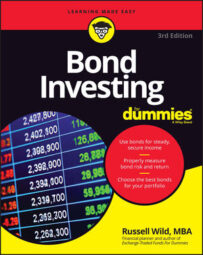Stocks and bonds are yin and yang — they go together perfectly. Stocks are where you’re likely to get your growth. Bonds provide predictability and stability. Any other reasons for having bonds in your portfolio — such as getting a stream of income — are nice, but secondary.
Some bonds are more volatile than others. That matters. But what also matters, perhaps more, is the extent to which the price of bonds tends to rise and fall with the price of stocks.
The kinds of bonds that historically zig when stocks zag are by and large the kinds of bonds that should dominate most people’s bond portfolios. And those kinds of bonds are government and agency bonds, high quality (investment-grade) corporate bonds (like Hershey’s), and perhaps tax-exempt bonds from stable municipalities.
Make your initial selection
In choosing types of bonds to put in your portfolio, you also need to look at your personal characteristics. For example, what may your need for funds be over the next several years? What is your tax bracket? Are you subject to the sneaky alternative minimum tax?
How much room do you have in your retirement accounts? How heavily is the stock side of your portfolio invested overseas? How subject are you to the ravages of inflation? These are some of the things that make someone different from you and may make their “perfect” bond portfolio very different from your “perfect” bond portfolio.
Follow a few rules
These guidelines should begin to give you an idea of the kinds of bonds you may want. They are quick and a bit dirty.
-
Rule #1: It’s best to keep three to six months of living expenses in cash (a savings account or money market fund) or near-cash for emergencies. For any major expenses you anticipate in the next couple years, you may want to keep that money in near-cash as well.
Near-cash means very short-term, high-quality bonds or bond funds with bond portfolios maturing in one to three years. Short-term bonds generally pay slightly higher rates of interest than savings accounts and money market funds but less interest than longer-term bonds.
Correspondingly, they can be a wee bit more volatile than a money market account but far less volatile than longer-term bonds.
-
Rule #2: Money you won’t need in the next few years should be invested in higher yielding securities for greater income and growth. These securities include bonds with maturities of three years and greater.
-
Rule #3: The majority of your bond holdings should be high-quality, mid-term (3- to 10-year maturity) bonds, be they Treasuries, agency bonds, corporates, or munis. If you’re looking for higher return and can take the risk, you’re usually going to be better off moving into stocks rather than into either high-yield or ultra-long-term bonds.
Go with tax-free munis if your tax bracket warrants it and if you are investing in a taxable account. As for the other bonds, it’s preferable to mix and match both issuers and maturities.
-
Rule #4: Whatever your allocation to fixed income, but especially if you have a large fixed-income allocation, a portion of it should be inflation-adjusted, either with an inflation-adjusted annuity or with special bonds called Treasury Inflation-Protected Securities (TIPS).
TIPS are a nice complement to other bonds because they tend not to correlate to other bonds in their price movements. If inflation takes off, or even if people think inflation is about to take off, traditional bonds tend to suffer, but TIPS tend to flourish. If inflation is less than expected, however, TIPS won’t do as well.

